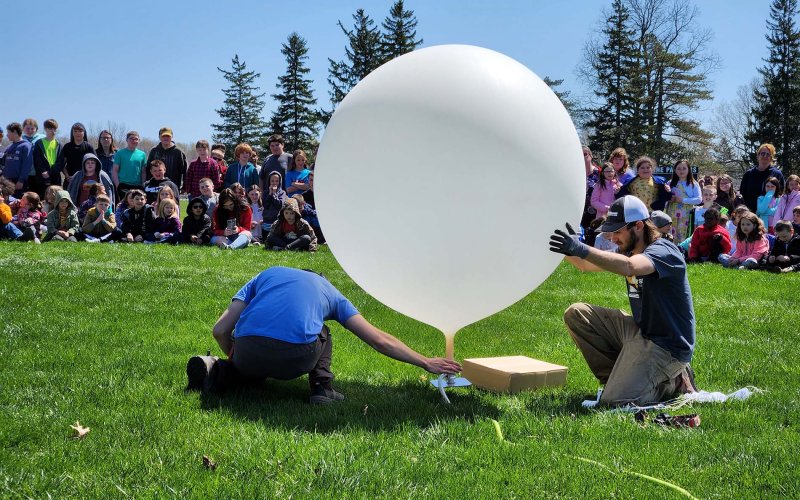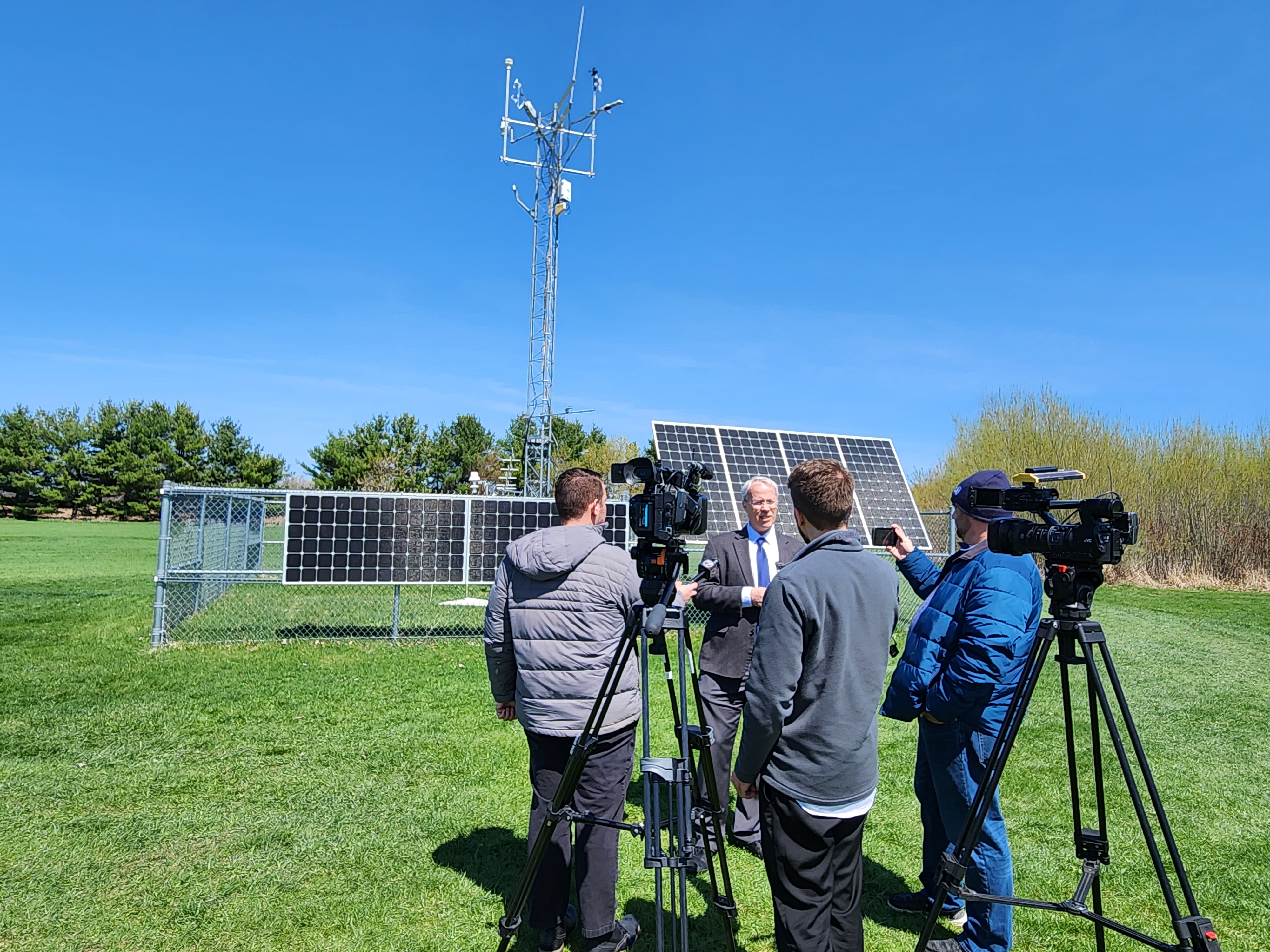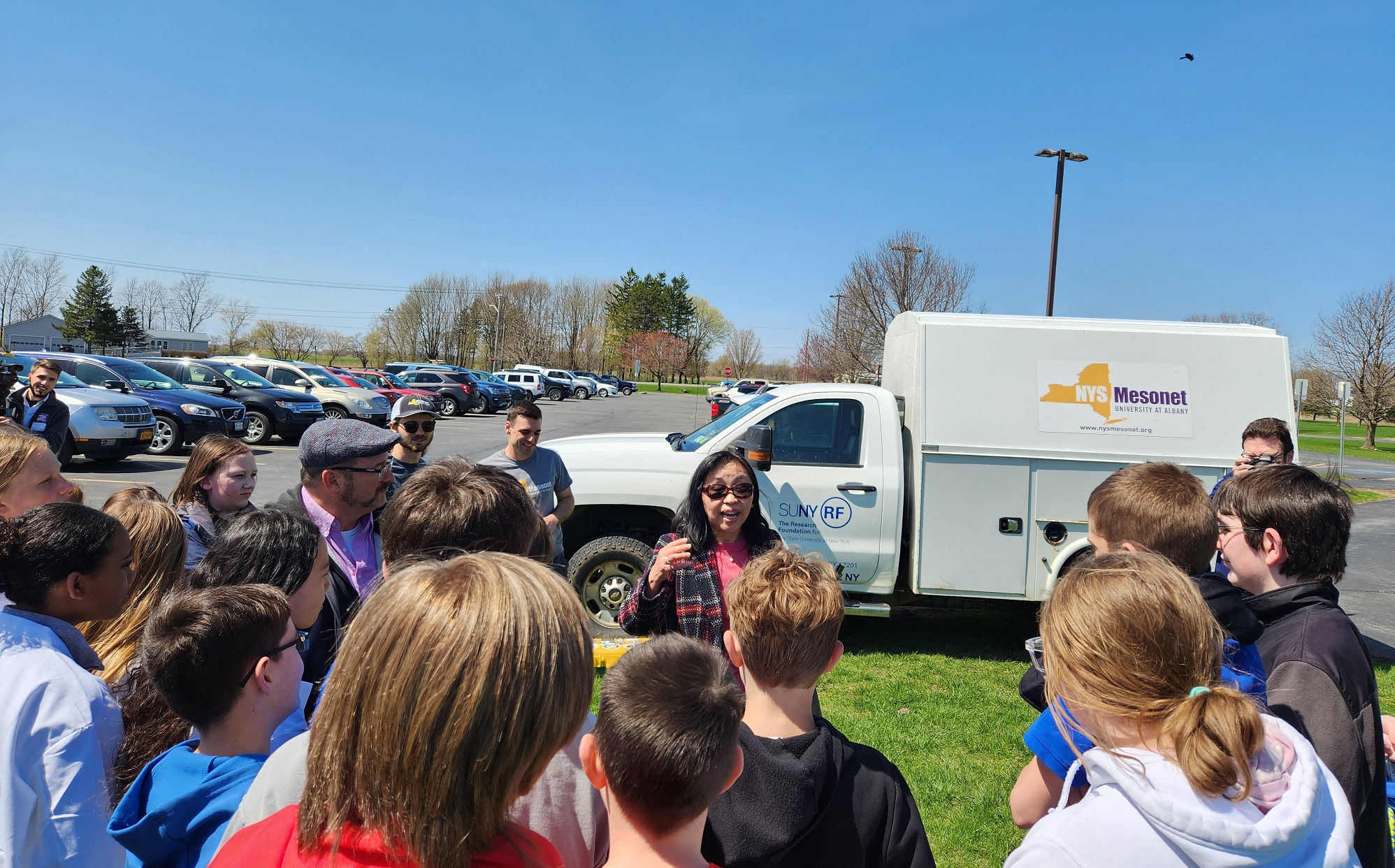New York State Mesonet Celebrates Five Years of Operations

By Mike Nolan
ALBANY, N.Y. (April 27, 2023)—The New York State Mesonet, the nation’s most advanced and largest early warning weather detection network, is celebrating five years of operations this month.
Following Superstorm Sandy, and several other extreme weather events in New York, FEMA provided the state with a recovery and resiliency grant to establish the Early Warning Severe Weather Detection Network in 2014, now known as the NYS Mesonet.
The Mesonet network was completed in April 2018, with the University at Albany helping to design, install and operate it. Each of its standard 126 weather stations, spaced an average of about 19 miles apart across the state, measure temperature, humidity, wind speed and direction, pressure, precipitation, solar radiation, snow depth, soil information and also offer camera images. The data is collected in real-time every five minutes, feeding weather prediction models and decision-support tools for users across New York.
In addition, several sub-networks of specialty sites have been deployed, including a Profiler Network of 17 sites that provide additional data about the atmosphere vertically (up to 6 miles above ground); a Flux Network of 18 stations that monitor surface energy; and a Snow Network of 20 sites measure the water content of snow.
“Our state is especially vulnerable to extreme weather. Through the NYS Mesonet, we are proud to offer New Yorkers real-time environmental data that can help improve observational awareness and decision-making across nearly every sector of the economy,” said Chris Thorncroft, director of UAlbany’s Atmospheric Sciences Research Center, NYS Mesonet and Center of Excellence in Weather & Climate Analytics.
“The NYS Mesonet is the most advanced and largest of its kind. I’m thankful for our excellent team of researchers and technicians, the backbone of this network, who have operated and maintained it daily over the last five years.”
Mesonet Birthday Celebration
To celebrate its fifth anniversary, members of the Mesonet team at UAlbany visited the network’s Belleville site in southern Jefferson County on Thursday, April 20.
The Mesonet’s Belleville site is located on the grounds of the area’s community public school, which serves 500-plus students in pre-kindergarten through 12th grade. Belleville is a Mesonet “supersite” equipped with standard, profiler and flux instrumentation.

During the visit, Mesonet leaders, including Thorncroft, program manager June Wang, student intern Eric Creighton and field technicians Nick Farruggio and Sam Cherubin, met with reporters, students, teachers and school administrators.
Their visit included a brief presentation about the network, Q&A, site tour, weather balloon launch, and, of course, a Mesonet cake that was cut and shared with the school community.
“We are proud of what we have achieved, not only building this network but also (more importantly) continuously operating and maintaining it to the highest standards,” Wang said. “I am grateful to our dedicated staff and continuous support by the University at Albany and the National Weather Service's National Mesonet program.
“At our Belleville visit, I was pleased to see how excited students were to learn what we do, from a weather balloon launch for elementary students to lectures for high schoolers. We plan to reach out to more schools in the future, especially the dozen schools across the state with a NYS Mesonet station in their backyard.”
See media coverage of the Mesonet’s celebration at Belleville on News Channel 2 – Utica, WWNY TV – Watertown and North County Public Radio – NCPR.
Weather-Ready New York
Since its launch, federal and state governments, along with academic researchers and other public and private industry partners, have widely used the New York State Mesonet to improve weather-based decision-making.

Late last year, for example, researchers at the Mesonet and Center of Excellence in Weather & Climate Analytics worked closely with state agencies and emergency managers in western New York to track historic snowfall totals at network sites in the Buffalo area during several multi-day lake-effect winter storms in the region.
Similarly, in 2021, when remnants of Hurricane Ida battered the Northeast, Mesonet researchers tracked record-breaking rain totals at sites in the New York City area. Following the storm, Gov. Kathy Hochul and the National Weather Service referenced the Mesonet for doing what it was intended to do—creating situational awareness and improving resiliency for New Yorkers in the face of extreme weather.
Notable Mesonet site records include:
- Warmest temperature: Beacon (99.06 F) — Aug. 4, 2022
- Highest heat index: Dover Plains (111.32 F) — July 20, 2019
- Coldest temperature: Philadelphia ( -39.33 F) — Dec. 28, 2017
- Coldest wind chill: Ellenburg (-49.28 F) — Feb. 4, 2023
- Maximum wind gust: Malone (79.57 mph) — May 5, 2018
- Maximum 24-hour precipitation: Staten Island (8.44 inches) — Sept. 2, 2021
- Maximum snow depth: Redfield (59.49 inches) — Feb. 3, 2017
- Maximum one-hour snowfall: Owego (7.02 inches) — Dec. 17, 2020
The Mesonet’s real-time data is available for public viewing on its website and mobile app, along with a newly launched Winter Weather page that offers continuous, statewide updates on winter weather variables such as snow depth, recent snow accumulation and precipitation type.




